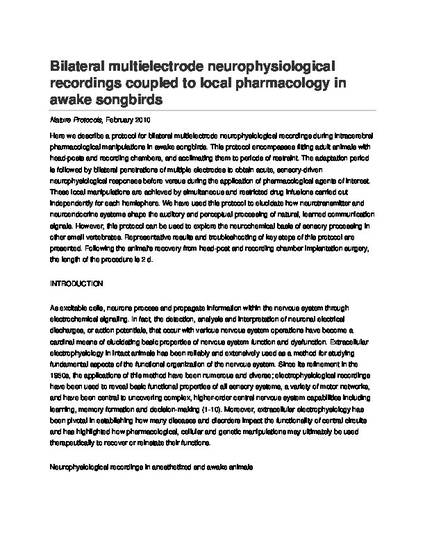
Here we describe a protocol for bilateral multielectrode neurophysiological recordings during intracerebral pharmacological manipulations in awake songbirds. This protocol encompasses fitting adult animals with head-posts and recording chambers, and acclimating them to periods of restraint. The adaptation period is followed by bilateral penetrations of multiple electrodes to obtain acute, sensory-driven neurophysiological responses before versus during the application of pharmacological agents of interest. These local manipulations are achieved by simultaneous and restricted drug infusions carried out independently for each hemisphere. We have used this protocol to elucidate how neurotransmitter and neuroendocrine systems shape the auditory and perceptual processing of natural, learned communication signals. However, this protocol can be used to explore the neurochemical basis of sensory processing in other small vertebrates. Representative results and troubleshooting of key steps of this protocol are presented. Following the animal's recovery from head-post and recording chamber implantation surgery, the length of the procedure is 2 d.
Tremere, L. A., Terleph, T. A., Jeong, J. K., & Pinaud, R. (2010). Bilateral multi-electrode neurophysiological recordings coupled to local pharmacology in awake songbirds. Nature Protocols, 5(2), 191-200. Doi: 10.1038/nprot.2009.224
